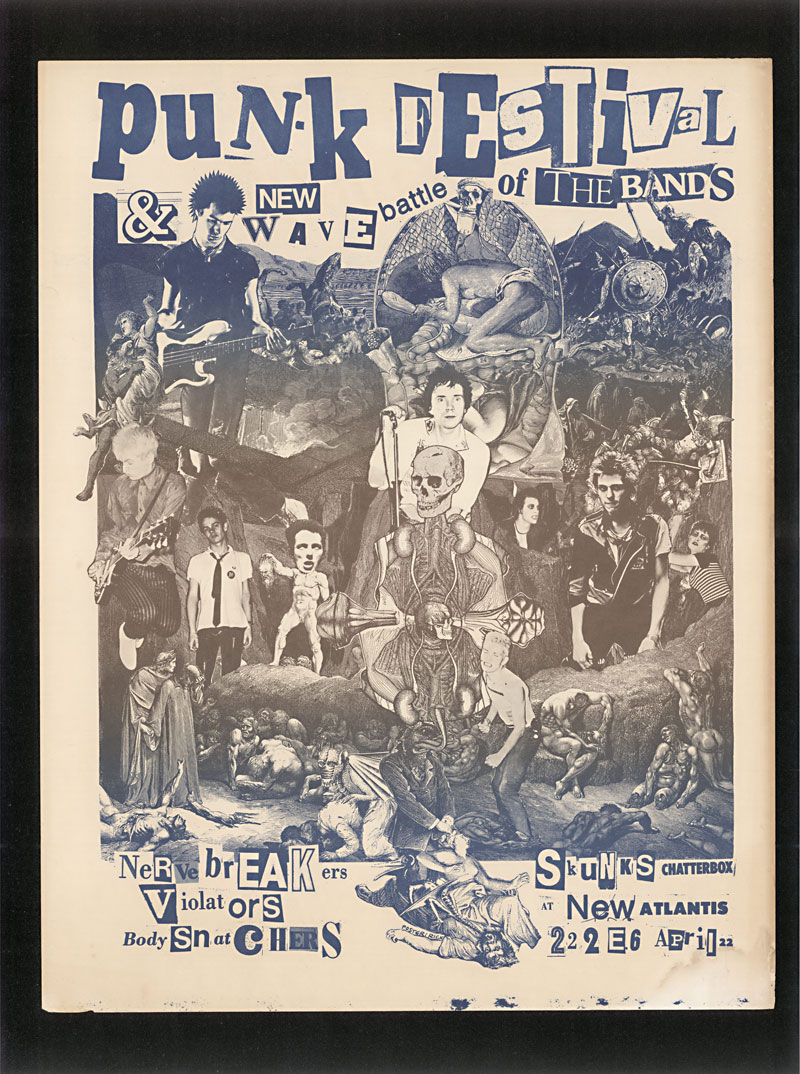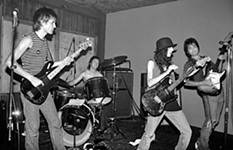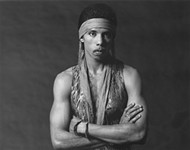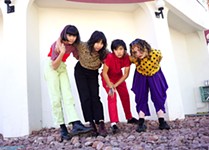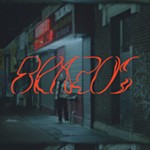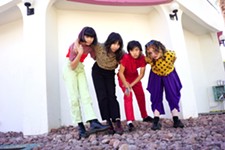Raul's in Overdrive: "Have a Good Time, Get in Free, and Drink Some Beer"
1978, when San Antonio's the Next became Austin's Fourth Punk Band and Dallas' Nervebreakers beat locals in a battle of the bands for Chapter 6, Part 1 of the "Austin Punk Chronicles"
By Tim Stegall, Fri., Dec. 23, 2022
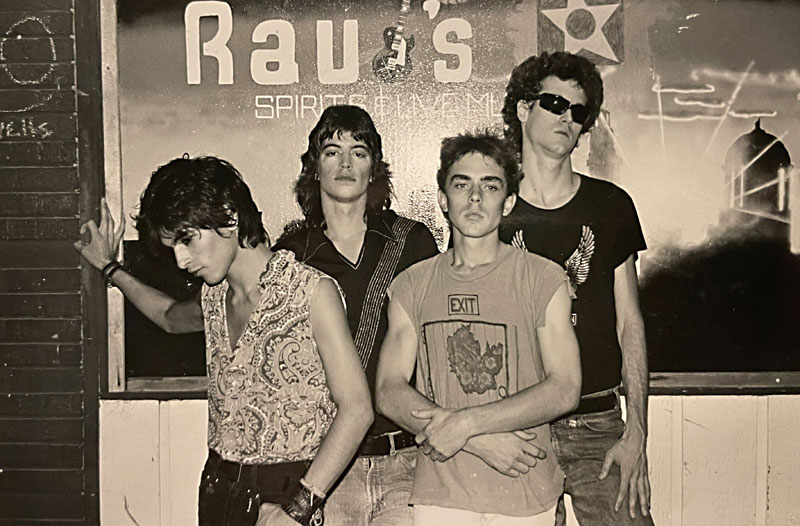
Editor’s note: This is Chapter 6, Part 1 of a serialized history of Austin punk by veteran writer and punk musician Tim Stegall. You can read past installments of the “Austin Punk Chronicles” here.
"I Don't Know What the F**k's Going On Here, but I Wanna Be a Part of It"
Future Big Boy Chris Gates had been at Raul's before it was called Raul's, though he doesn't remember the name. Perhaps it was the Hungry Horse, where Skunks members Eddie Muñoz and Jesse Sublett played in their late-stage glam outfit, Jelly Roll? Teenage Gates pretended to camp overnight in his backyard to dodge parental oversight, then snuck over to the Drag to check out 2610 Guadalupe.
None of the still-longhaired Ted Nugent fan's previous sorties prepared him for the sight of "biker-looking dude" Tuck working the front door, or for the flamboyant Mr. Rudy taking admission once he passed Tuck's ID check. This was 1978, Gates was still in high school, and the only gay person he knew was fellow future Big Boy Randy "Biscuit" Turner, via various local skateboard sessions. Biscuit may have been proudly out, but Mr. Rudy lived 500 miles beyond the closet.
Bassist-to-be Gates noted "the mural of rats crawling out of a sewer pipe that covered one entire wall along the dance floor, and people who weren't dressed like British punk, but they had a definite style." He walked in just in time to catch the last few songs by local act the Mistakes, who Gates summarizes as "not like the Ramones ... They were fast, loud, and tight – no solos and all the rest."
"Then the Next came on, and they were just mesmerizing. They had a cardboard box on the stage with a sign saying they were taking donations of drugs and money for their trip to the West Coast! They felt dangerous – Lee Shupp with eyeliner, looking like Mick Jagger with a meth problem."
Gates could relate the Next's vibe to that of the Stooges' 1970 album, Fun House, which he'd bought at age 11. He'd never been able to connect any music or performers to Iggy Pop and crew's dark, droning proto-punk – all fuzz and feedback and funereal funk, like the Rolling Stones in hell – until now. And he liked it.
"The Next opened the door for me. They were impressive. That night I said, 'I don't know what the fuck's going on here, but I wanna be a part of it.'"
Gates was now a punk rocker. All he needed was a haircut.
The Next: "Halfway Between a Street Gang and Glam"
Likely, this was many punters' initial reaction to the Next. They migrated from San Antonio seemingly full-blown – darker, angrier, more 1969-Detroit-motor-driven and 1973-New York-decadent than the other bands in town. Plus Ty Gavin's megawatt charisma and matinee idol looks made him Austin punk's first great frontman.
"The Next were halfway between a street gang and glam," says Gavin, resident once more in his adopted hometown of San Antonio these days. "I was thrilled when I heard the New York Dolls, because there were guys singing like me. I could understand [David Johansen's] accent, that and Lou Reed."
NYC-born-and-bred, Gavin was aware of the Stooges/Dolls/Velvets/Warhol/Max's Kansas City demimonde as he grew up, but way too young to eyewitness them before his family's migration to the Alamo City. He attended Lee High School, as did the Skunks' Eddie Muñoz and future Next drummer Arthur Hays. Gavin's first job was working as rock photographer Tom Wright's assistant, which developed his yen to join the rock & roll world.
"I was stuck photographing these bands that didn't move onstage, did nothing, just these hippies playing guitar," he scoffs. "So I thought, 'Fuck, do something! I'm here with a fucking camera!' That's when I first thought, 'I could do better than that!'"
His roommate, future Next manager Will Sharp, stocked local shop the Record Hole's import section, giving the duo precious exposure to the scene brewing in England. They were pumped for the Sex Pistols' invasion of Randy's Rodeo on Jan. 8, 1978.
"The night of the Sex Pistols, Will told me, 'There's this guitar player I think would be good.' That was Skip Seven, who had just got back from England. So we immediately started writing songs, and once we got some together, we moved to Austin and rehearsed for a month. Then we started playing."
Gavin, Seven, Hays, and original bassist Manny Rosario practiced at the Vault, a fur storage facility where Beaumont native Mike Runnels' band the Mistakes rehearsed. The main room was big enough that the Next opted to play their debut gig there. Gavin recalls: "Our first gigs were at the Vault, Esther's Follies, and some other places. But we knew Raul's was the important place right from the start, so we were aiming for that."
Whether the Next initially wowed those scenester UT Radio-TV-Film majors snatching up import 45s at Inner Sanctum Records or not is debatable – Gavin recalls playing horribly at the outset. But soon enough, their dark amalgam of crash-and-burn British punk, à la the Damned with U.S. chainsaw garage influences, became a hit. On Next guitarist Seven, Gavin reflects: "Skip had a great, unique style of playing and writing lyrics.
"He was kinda like the Brian Jones of the Next. He was the creative spark, and he had a unique point of view. He had vision. My influences were Iggy Pop, Lou Reed, Alice Cooper, and Jim Morrison. But Skip had just got back from England, and he saw a lot of what was going on. He knew what was coming, but he was already there with it."
With Lee Shupp assuming bass duties, after Jack Smith depped for Rosario briefly, the Next's more sinister sound, fronted by the singer's post-Iggy showmanship, propelled them to the local front lines. Snarling anthems like "Teenage Frankenstein" over Seven's thick, sustained, Pete Townshend-like chords, Gavin possessed some sort of arcane, Stygian knowledge above anyone else stalking the Raul's stage. It intimidated some, seduced others.
The Next was officially Austin's Fourth Punk Band. For his part, Gavin could care less, in true punk fashion.
"I don't give a shit about being the first anything," he scoffs. "We were just there to have a good time, get in free, and drink some beer."
The Punk & New Wave Festival Battle of the Bands
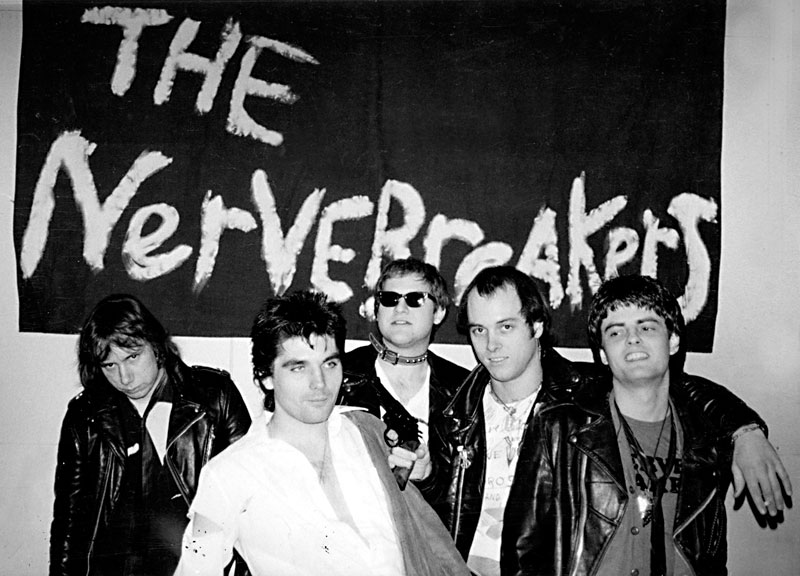
When the Nervebreakers' van pulled into Austin on the afternoon of April 22, 1978, the Dallas band likely didn't plan on conquering the state capital's blossoming punk scene. They were just playing another gig, same as when they happened to open for the Ramones at Dallas' Electric Ballroom nearly a year earlier, or joined the Sex Pistols' Dallas tour stop at the Longhorn Ballroom three months before. Never mind that photos of guitarist Barry "Kooda" Huebner, playing guitar with a fish someone had thrown at him that night at the Longhorn, landed them in Rolling Stone.
"The cats kept sniffing at my guitar case for days after," smirks Kooda.
The Nervebreakers evolved from an art rock band called Mr. Nervous Breakdown, formed in 1974 with Kooda's high school classmate Mike Haskins on guitar, drummer Carl Giesecke, and a record store clerk named Thom Edwards on vocals. Kooda and Haskins played together in a number of garage bands in the late Sixties prior to the former dropping out of high school to join the Army. With Kooda's manic energy and unique fashion sense firmly in place, the Nervebreakers rapidly evolved an MC5/New York Dolls/Troggs-infused racket that dovetailed nicely with the changing tide in rock & roll.
When the guitarist repaired the crotch of his Levi's with safety pins, purchased from a 7-Eleven while on a delivery run for a beauty supply house that Edwards ran, the latter replied: "Hey, they're doing that in England!"
Their catchy originals – the anthemic "My Girlfriend Is a Rock," "Hijack the Radio!" "Why Am I So Flipped?" – are raw bursts of wiseguy humor and Seventies hipster insouciance. A dollop of 13th Floor Elevators-esque psychedelia added some twisted menace. But their real innovation was the country & western infusion Haskins and Edwards brought to the band: mixing ripped-up pearl snap shirts and dirty cowboy boots with their leather jackets, playing breathless rave-up renditions of such twangy chestnuts as George Jones' "The Race Is On."
Preempting the rise of Jason & the Scorchers and Hickoids by eight years, the Nervebreakers were the first cowpunk band, before that designation devolved into a Los Angeles cartoon.
The Nervebreakers had already played Raul's twice by the time local promoter John David Bartlett booked them for a battle of the bands called the Punk & New Wave Festival – at New Atlantis on 222 E. Sixth, currently the location of Recess Arcade Bar. They'd already gigged with the Skunks, the Violators, and other local bands by the time they drove down to Austin that April day. Kooda recalls trading a Nervebreakers pin with Kathy Valentine for a Violators one, but there was still not a lot of camaraderie with the natives.
"It was really clannish between Austin and Dallas," he says. "And Houston too, though the scene there was not that big. But it was much easier for us, [being from] Dallas, to play in Austin than it was for Austin bands to play in Dallas, for some reason. It was harder work for the Austin bands to win over a Dallas audience, and there weren't that many places to play."
Now they faced off against an ATX delegation consisting of the Skunks, Violators, and Bodysnatchers – pretty much the sum total of the local punk scene at this point – plus San Antonio's Chatterbox. Bodysnatchers bassist Kyle Brock had another engagement, so Jimmy Pettit, later a member of Joe Ely's band, was deputized for the evening.
"New Atlantis was a big place, a full theatre stage and everything," says Kooda. "We were trying to go in and be a little less antagonistic, and maybe get a record deal. So we were trying to be nicer guys and not be so punked-out, and when we showed up, everybody thought that we were the roadies! [Laughs] Our roadies, Robert Essary and Pope, walked in with leather jackets, talking shit.
"'Oh, these guys must be the Nervebreakers!' Nah, that's us – the pretty ones."
Essary and Pope drank the band's free beer allotment while they were onstage, on which Kooda fumes: "Back then, the band would get three pitchers of beer, or five pitchers or whatever. That was part of your deal. We would get offstage after playing; 'Well, you're already two pitchers over your limit.'"
The Nervebreakers took first prize that night. The Violators and Bodysnatchers licked their wounds in a second-place tie, which didn't sit well with the latter outfit. A new Bodysnatchers song debuted shortly afterward, "Battle of the Bands." Believing they were the contest's true victors, they lyrically challenged the Nervebreakers to a rematch: "We'll kill ya!"
Not the band, but roadie Essary later came close while standing in the front door of Raul's when a dentist decided to ram his BMW through the building. Kooda says his tourmate couldn't walk for years after but came out with a sizable compensation. ("He pretty much blew it all pretty quick. Give a punk rock guy a buncha money, you know what's gonna happen to it.")
Three Chords, Some Verses, a Chorus, and a Bridge
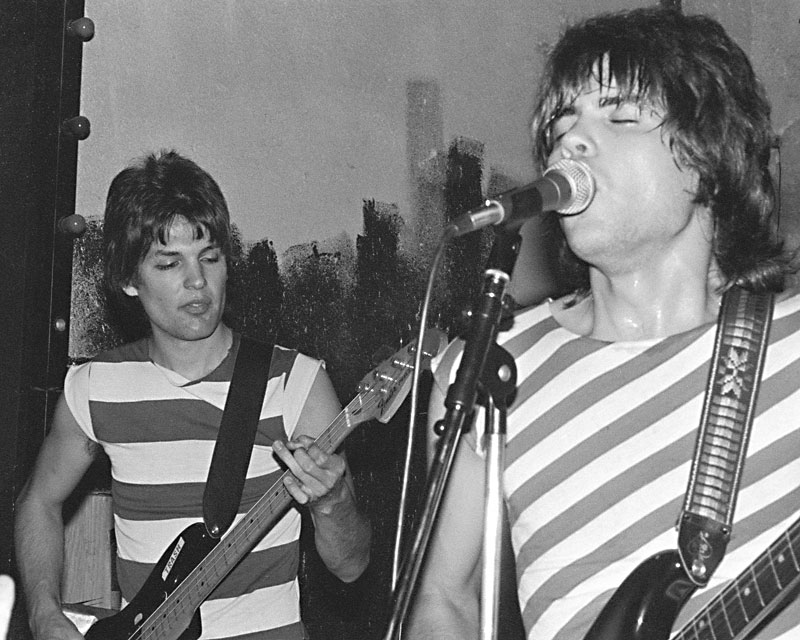
The Punk & New Wave Festival drew significantly larger numbers than the exponentially multiplying horde filing past Tuck and Mr. Rudy, which meant a lot more than RTF majors were about to shuffle through Raul's front door.
Booker Joseph Gonzales swiftly engaged the Skunks and Bodysnatchers for a Monday night residency through the spring of 1978. The bands alternated headlining each week before an ever-growing throng lured by ads Gonzales regularly placed in UT-Austin newspaper The Daily Texan. Cheap admission and equally low beer prices kept the audiences sanguine, a good atmosphere for a band to develop in.
"The Skunks started kicking ass," Jesse Sublett wrote of the period in his 2004 memoir, Never the Same Again. "Our fans were intense. They danced like crazy. A girl who worked at a copy shop ran off our posters for free. Guys volunteered to be roadies. Roadies told people they were the managers of the band. Girls volunteered to be groupies ... Almost every time we played, we gave autographs."
The singer/bassist's notebooks filled with new Skunks originals, bolstered by tricks of the trade he'd learned from guitarist "Fazz" Eddie Muñoz. Of his bandmate's depths of compositional dynamics, Sublett wrote: "He opened my eyes to the fact that the best songs were pretty simple ... All you really needed were three chords, some verses, a chorus and a bridge ... A bridge can add a ray of hope to a sad song, inject sophisticated melancholy into a brainlessly happy one, or turn a handful of fragments into a tune you can't get out of your head."
Sublett's newfound knowledge came in handy as he, Muñoz, and drummer Billy Blackmon entered the studio that spring, aided by an Armadillo World Headquarters-era luminary. Joe Gracey's warm, rumbling drawl was familiar to Austin via KOKE-FM, where he pioneered its progressive country format as a popular on-air personality from 1972 on. Now he wanted to record the Skunks at his Electric Graceyland studio, in KOKE-FM's basement.
Utilizing a bare-bones recording setup, employing no effects more sophisticated than a spring reverb, the DJ coaxed performances out of the 3-month-old Skunks that convinced all involved this was not a demo – it was an LP.
By autumn, Gracey and business partner Bobby Earl Smith, another progressive country veteran, convinced the Skunks to sign with their small Rude Records operation. Smith's résumé included scrubbing guitar in Freda & the Firedogs and Alvin Crow & the Pleasant Valley Boys, as well as co-production of Austin's First Punk Single with Doug Sahm in 1975, Roky Erickson's "Red Temple Prayer (Two Headed Dog)" b/w "Starry Eyes" (as detailed in Chapter 1).
An attorney by trade, Smith drew up a contract on a cocktail napkin. The Skunks signed it in his kitchen. The demo tape was now an album, set for a January 1979 release. It should've been Austin's First Punk Album.
"What could go wrong?" wrote Sublett. Plenty, it turned out.
Stay tuned: The “Austin Punk Chronicles” will continue next week with Chapter 6, Part 2.





